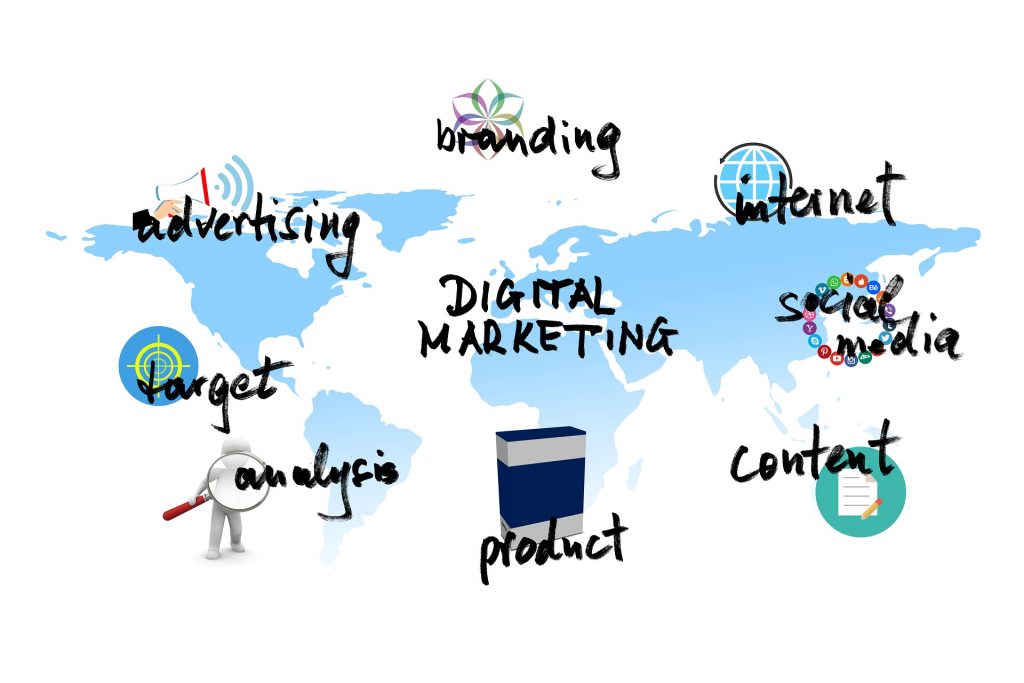Programmatic Advertising is the Future of Digital Advertising
Buying and negotiating advertisement sales is a tedious process. It is a significant expense out of your pocket having to hire someone to help you with ad placement. You try to select people that know the most about the market, go back and forth on a reasonable price, and strategize about the best way to place ads. However, ad placement can be tricky even with this process, and not everyone knows the best posting times to reach your target audience. Although this process is frustrating, it no longer has to be. Programmatic advertising is an up-and-coming way to simplify this process and does so with the application of new technology.

What is Programmatic Advertising?
Programmatic advertising is the future. This software tool uses AI technology to buy and sell optimal ad space for your company based on your selected target audience. This application can utilize the ad space for banner ads on websites, native ads within social media, ad placement at the beginning of videos, or various other locations. This process is straightforward and does not take up much time. The program uses different algorithms to determine what ad space will result in the best performance for your company. It then returns analytical data regarding how well your company performed from the ad placement. This data tells you about the number of impressions, clicks, and interactions your ad got. Programmatic advertising is a great new way to simplify the process of buying and selling the best place for ads for your company.
Programmatic advertising is the future. It simplifies the buying and selling of ad space through its AI technology, has a high ROI, and does not entirely remove the human element of digital marketing.
The Human Element
Although many people fear the transition to AI, there is still a human element to programmatic advertising. The application only focuses on obtaining the ad space for your product, handling the transaction process, and determining optimal posting times. You are still in control of the content you want to be published and who you target to view these advertisements. If something you created is not working how you desired, the person in charge of the ad campaign can interfere and stop it whenever they want. Once stopped, the ad can be changed multiple times, and the changes take immediate effect. Programmatic advertising is not all artificial intelligence. You are still in control of what you post and can even make changes to your campaign in the middle of it, which is not plausible otherwise.
Benefits
Programmatic advertising has many benefits for organizations. The automation process promotes better return on investment for ad placement and ensures efficiency, productivity, and cost savings. Here are the top four benefits of programmatic advertising.
1. Anyone can use it
Both large and small companies can use programmatic advertising for ad placement. The program does not break the bank and is a cheaper alternative to hiring someone to buy ad space for you. Small businesses could select a more niche target audience to focus on for their programmatic advertising. Once the company gets a large amount of outreach from this, they could broaden the target audience they are trying to acquire. For larger companies, they can use programmatic advertising for whoever they wish to target at the time. If they were releasing a new product line for women’s shampoo, they could use different targeting for that advertisement than for men’s razors. The possibilities for programmatic advertising are endless, and any company can use this program.
2. Eliminates Difficulties of Manual Ad Buying

Programmatic advertising is very efficient. As previously discussed, the entire process of buying ad space, which is supposed to be a long and tedious process, is done within a matter of seconds. Organizations no longer have to worry about going through this process since AI technology can do it for them. Not only does this benefit their profits, but it promotes time savings within the company. Organizations can now use their previously wasted time negotiating deals for ad space towards other business aspects. Additionally, companies can work on new ad campaigns while promoting the current one through programmatic advertising. Companies will have an easier time dealing with the purchase of ads and, in turn, can use this extra time to do more for their organization.
3. Return on Investment
Programmatic advertising has an amazing return on investment. The algorithms in the application determine the best location and posting times based on the target audience provided. This technology ensures that optimal posting is done to promote your brand. As a result, people get excited about your brand, and it is more likely that people will view your website. Then that can turnover to purchases, which will create a profit for your brand. Plus, programmatic advertising is much cheaper than hiring someone to buy ad space for you. It only costs $0.50-$2.00 per 1000 ad impressions on websites and $6-$7 per 100 ad impressions for social media. This alternative to manual ad purchasing saves you a lot of money and results in a much higher ROI.
4. Automation is the Future
Programmatic advertising is just one of the many applications that deal with automation. Automating more aspects of your work will save your company time, money and promote efficiency. Plus, as more people adapt to this technology, it will be essential for your company to keep up with competitors and the ever-changing market. If other people benefit from the technology, why wouldn’t you want to? Automation truly is the future, and it is vital to keep up with everyone in the market so you do not fall behind.
Automation is not going away, just the opposite. It’s been gaining more traction and getting wider adoption. Instead of being afraid of it, people should embrace it and fully enjoy its benefits. Programmatic advertising is one of the first steps to integrating this technology into organizations. This application will simplify your life and help your company become more successful. Programmatic advertising is a great way to bring automation into your company while also helping save you money and time.












